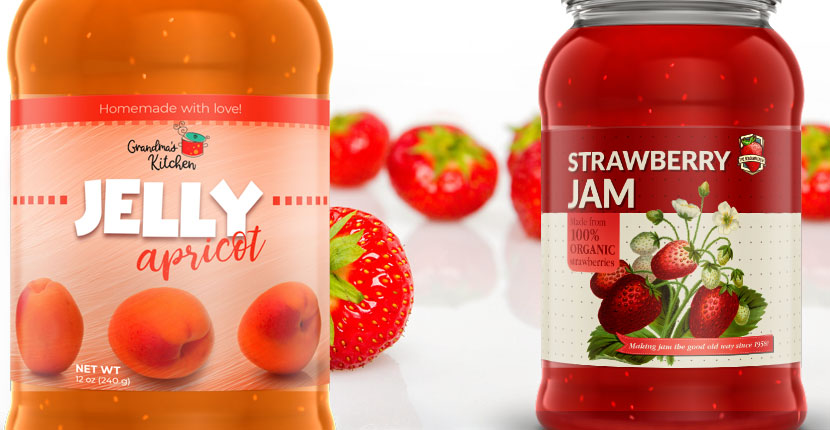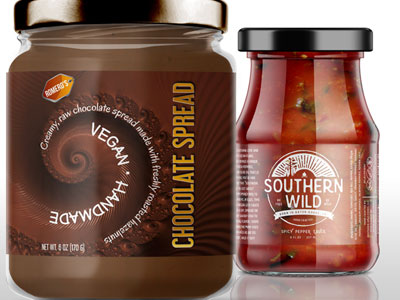There is some confusion about what’s actually jelly. Is it the same thing as jam or preserve? Encyclopedia of American Food and Drink defines jelly as a product that is made with fruit juice, while jam is made with fresh or dried fruit, and preserves contain pieces of fruit. Jelly is smooth, unlike jam which is thicker and may also be “chunky” with fruit. In addition, jelly is often made with an agent such as isinglass or gelatin powder.
According to the U.S. Food and Drug Administration, fruit jelly can be made by extracting juice from any of the following fruit or combinations of fruits: apple, blackberry, apricot, fig, grape, orange, peach, quince, and 20 other types of fruit. The fruit can be in any state, fresh, frozen or canned.
People have been making jelly since the ancient times, first only with honey, then with sugar, and finally with lots of different ingredients that are available thanks to modern technology. These ingredients better preserve jelly and give it a better taste and texture. Some of them are:
- sweeteners
- spices
- acidifying agents
- pectin
- preservatives
- antifoaming agents
- mint or cinnamon flavoring, etc.
According to statistics, approximately 90% of the American population consume jelly, jam and preserves. Jelly manufacturers have a pretty big market to deliver their product to, and most certainly a big competition. Those who pay close attention both to the quality of their product and to branding it properly have a better chance of attracting customers.
One of the trickiest things about preparing a jelly product for the market is creating appropriate food labels. They need to conform to labeling standards of food safety agencies such as the FDA and they need to be created from a quality material in order to stay applied to the jelly jar as long as needed.
5 Basic Rules of Labeling Jelly
As regulated by the FDA’s Code of Federal Regulations Title 21, the name of the jelly needs to appear on the jelly tag following these rules:
- If the jelly is made from one type of fresh fruit, for example peach, it will be labeled: “Peach Jelly”.
- If the jelly is made from a combination of fresh fruits, it will either be labeled “Mixed Fruit Jelly”, or it will include the name of each fruit used for jelly, as in: “Strawberry-Guava Jelly”.
- If the jelly is artificially sweetened and mixed with a jelling agent, that information needs to be included in the product name, for example: “Artificially Sweetened Peach Jelly with Added Pectin.”
According to FDA rules for proper labeling, most packaged food products, including jelly, need the following five elements to appear on the food label:
- Statement of identity (i.e. “Peach Jelly”)
- Weight of the product in grams and optionally in ounces
- Ingredients list
- Nutrition facts
- Address of the manufacturer, packer or distributor
The FDA also regulates voluntary information that a jelly manufacturer wishes to place on the label, such as “all natural”, “organic”, etc.
What Are Jelly Labels Made Of?
Whether you are a small, home-based jelly producer or you have big production facilities, you need professionally printed labels for your food product. The Food Packaging Labels team has lots of experience creating jelly labels and tags that stick to jelly jars and cans, and stay applied on the product for as long as the product’s shelf life, and longer.
Jelly manufacturers can either order blank stickers from our website, or contact us to find out the price for custom jelly labels. Our prices vary depending on the size, color and shape of your label, the number of stickers you need, whether you need them on sheets or rolls and which printing method you prefer, but we guarantee we’ll come up with a label solution and price that you’ll be happy with.



